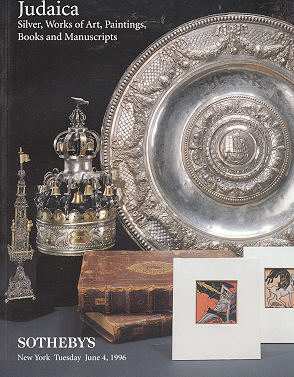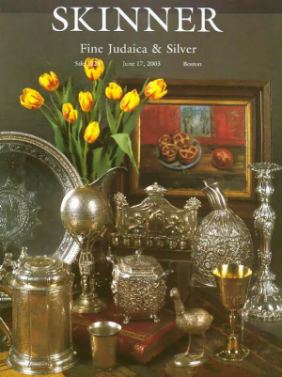The early historical books of the Bible show that even a nomad tribe in their desert wanderings
were able to carry the art of the goldsmith to a high state of perfection fifteen centuries
before the commencement of the Christian era. The malleability of gold must have been well understood by him who 'did
beat gold into thin plates' (Exod. xxxix. 3) and could 'cut it into wires to work it into the linen with
cunning work.' Adorning it with jewels must have been a familiar art to those who 'wrought onix stones
enclosed in ouches of gold' (Exod. xxxix. 6); and what more like work of some modern artist than the
candlestick wrought by the Israelitish smith of old, with its six branches of beaten work 'his
shaft, his branch, his bowls, his knops, and his flowers of the same; three bowls made after the fashion of
almonds in one branch, a knop and a flower; and three bowls made like almonds in another
branch, a knop and a flower: so throughout the six branches going out of the candlestick'
(Exod. xxxvii.)(endnote)
Since ancient times silver was the preferred material for making the Kiddush cups,
Hanukkah lamps, Torah decorations and the dozens of other objects used in observing the
'Mitzvot' (commandments).
Although silver has been important in the fashioning of secular and religious objects for
millennia, very little that was made specifically for Jewish ritual use before the 16th century
has survived.
Most of the objects we know of in museum and private collections of Judaica date
from the 17th, 18th, and 19th centuries.
'Judaica' is highly appreciateds by antique silver collectors and Sotheby's and
other primary auction houses dedicate specific auctions to this theme.
 |
 |
Sotheby's auction catalog of 'Judaica Silver ...'
|
Skinner auction catalog of 'Fine Judaica and Silver'
|
In Europe, Jews were not normally allowed to be silversmiths or goldsmiths because they were excluded from
membership in the guilds. So, many of the ceremonial objects in Judaica collections, though used by Jewish
communities, were made by non-Jewish manufacturers or artisans on commission. As a result, there are often
mistakes in the Hebrew because the people who made the objects didn't know Hebrew and could only copy it
from inscriptions written out for them.
The Judaic ceremonial art had its first public display in the late 19th century.
The collecting and displaying of Jewish ceremonial art for aesthetic as well as educational purposes was
unknown until the nineteenth century, as up to that time they were used only in the life cycle and
holiday ceremonies in the home and in the synagogue.
Some Jewish ceremonial objects were displayed in 1875 in the Amsterdam Historische Tentoonstelling and
a private collection of eighty-two objects was displayed in 1878 at the Exposition Universale of Paris.
The first major independent public display on Judaica art was held in the 1887 Anglo-Jewish Historical
Exhibition, and its 2945 items catalog was the first significant catalog of Jewish art.
Torah shield
Rimmonim - Torah finial
Yad - Torah pointer
An element often included in Torah decoration is the pointer. It is called a yad, the Hebrew word for
'hand.' The pointer usually hangs on a chain from the Torah staves. Because everything connected with the
Torah is particularly sacred, it is considered disrespectful to touch the text when reading the passages.
This is not only for reasons of respect but also because the constant touching with the finger would
eventually soil the Torah and require it to be reinscribed. When not in use, the yad is hung next to the
Torah shield and over the mantle.
Chanukah lamp or Menorah
Every year between the end of November and the end of December, Jewish people around the world celebrate
the holiday of Chanukah, the Festival of Lights. Chanukah begins on the 25th day of the Hebrew month of
Kislev, but the starting date on the western calendar varies from year to year. The Jewish Feast of
Lights celebrates a miracle in the struggle of the Maccabees for religious freedom. A Chanukah lamp,
or Menorah, lit on each of the festival’s eight nights, is an enduring symbol of Jewish
faith.
Etrog container (Spice box - Esrog Box)
Etrog holders are used during Sukkot, the Festival of Booths, to store the etrog fruit, an oval shaped
citron fruit. According to the Book of Leviticus, the etrog is one of the four fruits which Jews are
required to bring into the sukkah (booth) on Sukkot. Etrog, according to rabbinic tradition, was
considered to be representative of the "fruit of goodly trees," which was believed to be one of the
four species of plants. Although the using of etrog during Sukkot dates back to ancient times, the etrog
container is of relatively recent origin
Kiddush cup (Kiddush goblet - Kiddush beaker)
A kiddush cup or wine goblet is used on Sabbath. On Friday evening it is filled with wine, often from
Israel, at the beginning of the Shabbat meal. The word 'kiddush' actually refers to the blessing which
is recited over the wine before the meal begins. After Kiddush has been made, everyone present shares
the wine. The goblet may be used again at the Havdallah ceremony at the end of the Sabbath.
Spice tower
According to rabbinic legend, each Jew receives a special soul (neshama yetera) on the Sabbath. As this
extra spiritual dimension departs from the body at the close of the Sabbath, one is overcome with a certain
degree of sorrow. The spices are interpreted as a means of comfort at the moment of transition to the new
week. As it was customary in ancient times to welcome the Sabbath with branches of myrtle, so during the
service to usher out the Sabbath — the Havdalah ceremony — people inhaled the fragrances of their branches.
In the course of generations, aromatic spices (most popularly cinnamon and cloves in Ashkenazi communities)
began to replace the myrtle.
The use of sweet-smelling herbs and spices roused the creative instincts of artisans and they fashioned
spice boxes in widely varied designs and shapes — in gold, silver, brass, glass and wood. In Ashkenazi
circles, the spice box took many forms, from flowers to miniature trains. Most popular, however, from
around the sixteenth century, was the tower form, which was stylistically influenced by local architecture
endnote: from Old English Plate by Wilfred Joseph Cripps - London, 1899, pp. 1 and 2
|